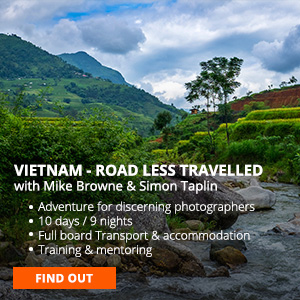Diagonal Composition Pt.2
If you've'e seen diagonals 1 where we introduced what they are and how to arrange elements of the composition into diagonals, now it's time to look for some examples.
If you're shooting a portrait you can ask your model to lean against a wall or otherwise be arranged into a diagonal that will work for the composition. It's harder on the model but can look great.
In a landscape or scene you can either find an element like the boat in part 1 - or add one of your own to a strategic place in the image which will make the diagonal.
Another way to introduce a diagonal element to a composition is to simply tilt the camera a little. This works for some subjects and not others. If you're going to do a 'tilt' be careful not to over do it because the photo will end up looking very contrived.
Perspective can give you a diagonal like this gate. Notice how the house isn't tilted - but to get the shot I had to tilt the camera. I find short lenses work well for this kind of diagonal composition. Because of their natural distortion you can tilt the camera so one side is straight but the other will tilt a bit.











































